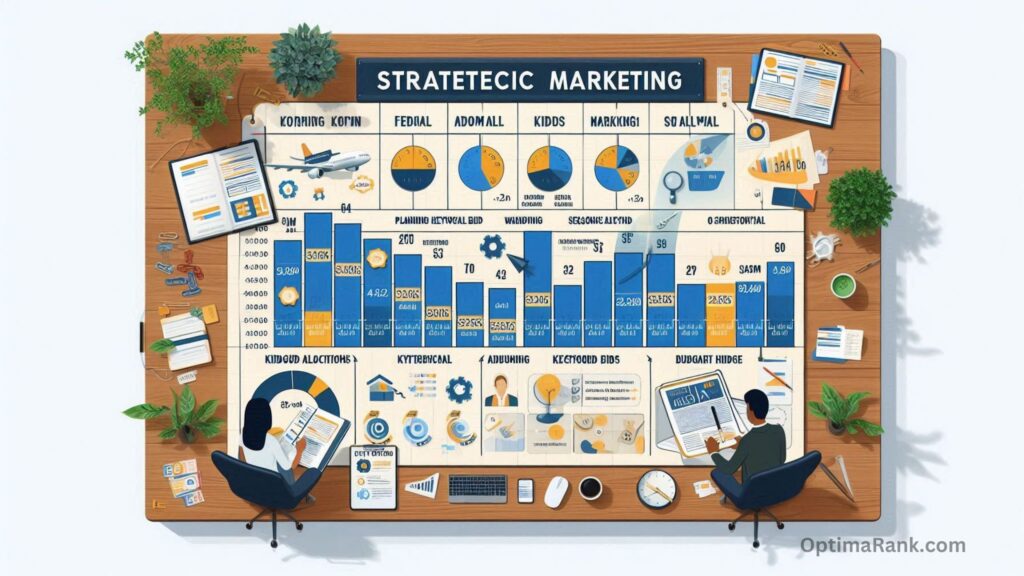How can I Refine Keywords Seasonally?
Ever wondered how to take advantage of seasonal keywords to boost sales? If you’re running ads, this question is bound to come up as your strategy evolves.
Even if your product isn’t obviously seasonal—like a Halloween costume—it probably still shows up in seasonal searches. For example, a toy brand might rank for “holiday toy gifts,” which naturally peaks towards the end of the year.
No matter what you sell, it’s smart to keep an eye on seasonal trends in your advertising. If certain keywords bring in strong sales during specific times of the year, you need a solid seasonality strategy to make the most of those opportunities.
Don’t leave money on the table! Seasonal keywords can be a goldmine if used correctly. Let’s break down how to identify and maximize them.
What Are Seasonal Keywords?
Simply put, a seasonal keyword is one that gets a surge in searches at a specific time of the year—usually tied to holidays or seasonal events.

Not all seasonal keywords behave the same way. Some are highly time-sensitive, while others fluctuate more gradually.
At Intentwise, we categorize them into two main types:
- Short-Tail Seasonal Keywords – These spike during a single event or holiday, then drop off dramatically. Examples:
- “Princess Halloween costume” (peaks before Halloween, then fades)
- “Valentine’s flowers” (big spike in February, little traffic otherwise)
- Long-Tail Seasonal Keywords – These have more gradual ups and downs rather than one big spike. Examples:
- “NFL jerseys” (in demand all year but surges during football season)
- “Wrapping paper” (sells year-round but peaks in November-December)

Also Read: How do LSI Keywords Improve Content Relevance?
Understanding which type of seasonal keyword you’re dealing with helps you plan your advertising strategy effectively.
How to Identify Seasonal Keywords
Some seasonal trends are obvious (swimsuits in summer, coats in winter). But others—especially gift-related products—might not be as easy to spot.

A great way to find seasonal patterns is by analyzing your keyword data over time. Look at your most popular keywords and track their performance month by month.
At Intentwise, we make this easy with our Ad Optimizer, which helps you see which keywords are gaining or losing traction. Many of our clients use it to spot gift-related searches that spike at the end of the year.

Also Read: How can I Find Long‑Tail Keywords?
How to Maximize Sales from Seasonal Keywords
Once you’ve identified your seasonal keywords, it’s time to build a winning strategy.

- Structure Your Campaigns Wisely
- Create separate campaigns for seasonal and non-seasonal keywords.
- Example: A florist should have one campaign focused on highly seasonal searches like “Valentine’s Day roses” and another for evergreen searches like “red flowers.”
- Increase Bids During Peak Season
- When demand is high, competition is fierce. Start ramping up bids a few weeks before peak season to capture early buyers.
- Example: Target “flowers” 3-4 weeks before Valentine’s Day to catch people searching for gifts.
- Adjust Budgets as Demand Shifts
- Once the peak season ends, lower your bids or pause seasonal campaigns to avoid wasting ad spend.
Should You Bid on Seasonal Keywords When They’re Off-Season?
What if you sell Valentine’s Day flowers—should you bid on that keyword in, say, October?

Sometimes, bidding before peak season can be smart. It helps you rank higher before competition (and costs) spike.
However, if you start too early, there may not be enough searches, leading to low impressions and conversions. If your conversion rate tanks, platforms like Amazon might deprioritize your ads when the real traffic comes in.
If you notice conversions dropping too much in the off-season, it’s best to scale back.

Also Read: How can Google Trends help with Keyword Research?
Executing a Seasonal Bidding Strategy
Whatever strategy you choose, the key is active bid management throughout the year.

- Manually track trends and adjust bids based on seasonality.
- Use automated rules, but ensure they account for seasonality.
- Leverage AI-based bidding, which can detect seasonal patterns and optimize bids automatically.
At Intentwise, our AI-powered bidding system helps advertisers stay ahead of these shifts—so they never overpay for off-season traffic or miss out on peak season opportunities.
By monitoring seasonal trends and making smart bid adjustments, you can maximize your ad spend and get the most out of every peak sales period.




Post Comment